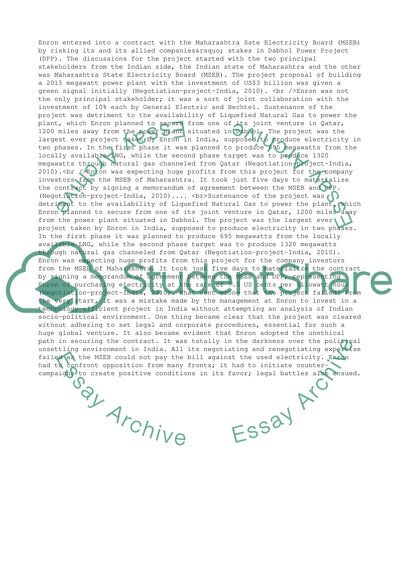Cite this document
(“Enron corporation's power project in India Essay”, n.d.)
Retrieved from https://studentshare.org/management/1399439-project-management
Retrieved from https://studentshare.org/management/1399439-project-management
(Enron corporation'S Power Project in India Essay)
https://studentshare.org/management/1399439-project-management.
https://studentshare.org/management/1399439-project-management.
“Enron corporation'S Power Project in India Essay”, n.d. https://studentshare.org/management/1399439-project-management.


